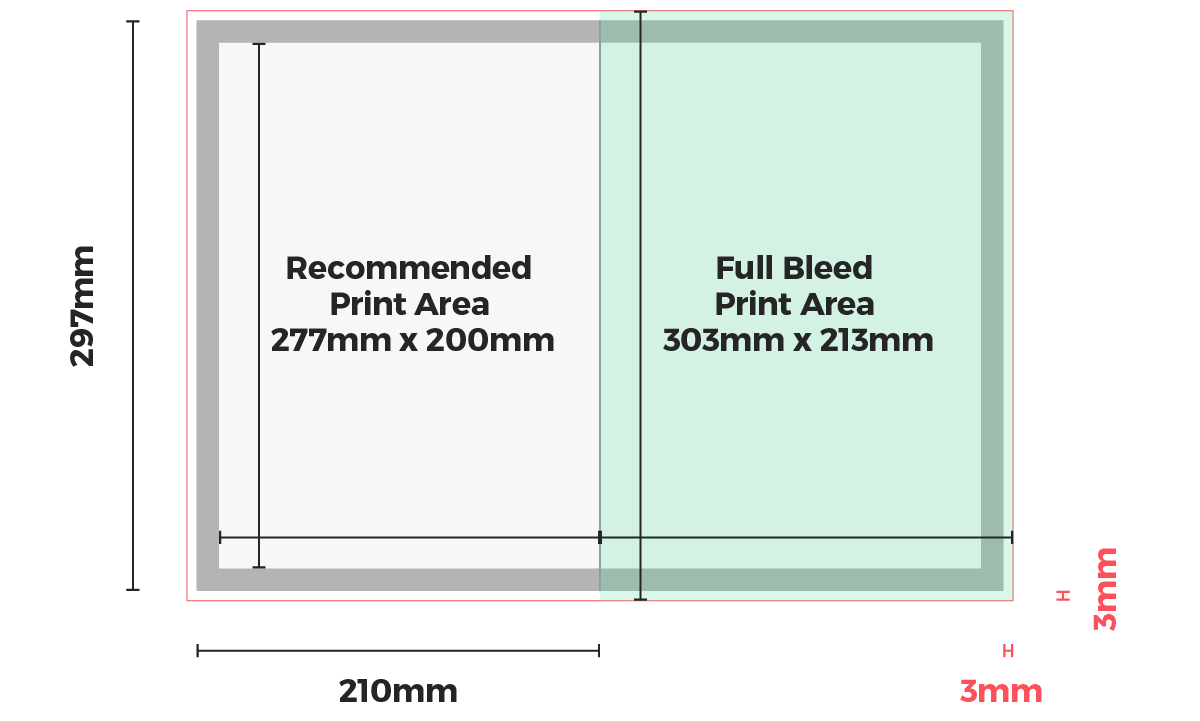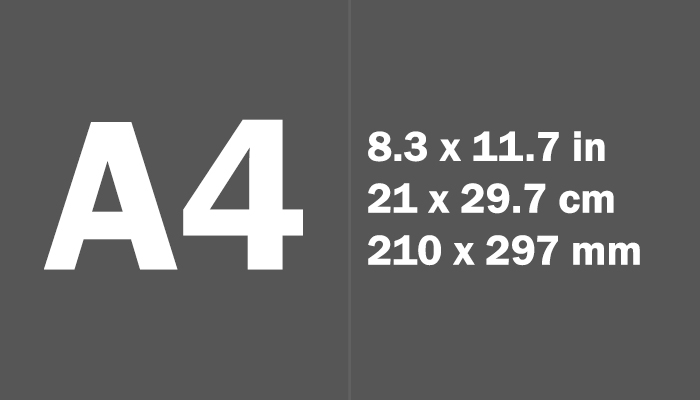The a4 paper size is a widely recognized international standard size used for various documents, including official letters, academic papers, and business correspondence. Its dimensions in millimeters (mm) are precisely defined, ensuring uniformity and compatibility in document creation and processing. Understanding the A4 page size in millimeters is crucial for accurate printing, scaling, and converting measurements.
Understanding A4 Page Dimensions

Standard Dimensions of A4 Page in Millimeters
The ISO 216 standard specifies the dimensions of the A4 paper size as follows:
- Length: 297 millimeters (mm)
- Width: 210 millimeters (mm)
These dimensions define the physical size of an A4 page, making it slightly shorter but wider than a US Letter page.
Aspect Ratio and Proportion
The aspect ratio of the A4 page is calculated by dividing the length by the width:
Aspect Ratio = Length / WidthAspect Ratio = 297 mm / 210 mmAspect Ratio ≈ 1.414The A4 page has an aspect ratio of approximately 1.414, which means it is roughly 1.4 times longer than it is wide. This aspect ratio maintains a balanced and aesthetically pleasing proportion for various document formats.
Conversion to Other Units
The A4 page size can be converted to other units of measurement using the following conversion factors:
- Inches (in): 1 inch = 25.4 millimeters (mm)
- Length: 297 mm / 25.4 mm/in ≈ 11.69 in
- Width: 210 mm / 25.4 mm/in ≈ 8″
| A4 Page Size | Length (mm) | Width (mm) |
|---|---|---|
| In Millimeters | 297 | 210 |
| In Inches | 11.69 | 8 |
Converting a4 size to Millimeters

Calculating Area of A4 Page
The area of an A4 page can be calculated by multiplying its length by its width:
Area = Length × Width
Area = 297 mm × 210 mm
Area ≈ 62370 square mm
Scaling A4 Page to Smaller Sizes
If you need to scale down an A4 page, you can do so proportionally by dividing both the length and width by the same factor. For example, reducing the size by half would result in dimensions of 148.5 mm length and 105 mm width.
Enlarging A4 Page to Larger Sizes
Similarly, if you need to enlarge an A4 page, you can increase its dimensions proportionally by multiplying both the length and width by the same factor. For instance, doubling the size would lead to dimensions of 594 mm length and 420 mm width.
International Standards for A4 Paper

Adoption of ISO 216 Standard
The A4 paper size is part of the ISO 216 international standard for paper sizes, which includes various formats for office, printing, and technical drawings. This standard aims to promote consistency and compatibility in document production worldwide.
Global Recognition of A4 Size
Due to its widespread adoption, the A4 paper size is recognized and accepted in many countries across different continents. It has become the default choice for creating documents that need to be shared internationally.
Compatibility with A4 Printers
Most modern printers and copiers are designed to accommodate A4 paper sizes, ensuring seamless printing and reproduction of documents without the need for resizing or adjustments.
A4 Page Proportions and Aspect Ratio
Balanced Dimensions for Documents
The A4 page size offers a balanced layout with its specific dimensions, providing ample space for content while maintaining a harmonious proportion. This balance makes it suitable for a wide range of applications, from text-heavy reports to graphical presentations.
Visual Harmony in Design
The aspect ratio of 1.414 for the A4 page contributes to its visual appeal by creating a rectangle that is pleasing to the eye. This proportion is often considered ideal for displaying information in a clear and organized manner.
Flexible Formatting Options
The proportions of the A4 page allow for versatility in document formatting, enabling users to adjust margins, columns, and graphics effectively. Whether creating a formal report or a creative brochure, the A4 size offers flexibility in design choices.
Optimizing A4 Page Layout for Documents
Margins and Padding
When designing a document on an A4 page, it is essential to leave sufficient margins around the content to ensure readability and allow for binding or hole-punching. Adequate padding helps prevent text or images from appearing cramped.
Header and Footer Space
Include designated areas for headers and footers in your A4 document layout to display page numbers, titles, or other essential information consistently. Maintaining consistent header and footer space enhances the overall professionalism of the document.
Column and Grid Alignment
For multi-column layouts or grid-based designs, aligning content along invisible lines can improve visual flow and readability. Ensure that elements such as text boxes and images align properly within the grid structure of the A4 page.
| Element | Size (mm) | Description |
|---|---|---|
| Margin | 10-25 | Space around content |
| Header/Footer | 15-20 | Top and bottom document areas |
| Columns/Grid | Varies | Alignment for structured layout |
Printing A4 Pages at the Correct Size
Printer Settings for A4 Paper
When printing documents on A4 paper, select the appropriate paper size setting in your printer preferences to ensure accurate output. Choosing “A4” in the paper size options prevents cropping or resizing during printing.
Adjusting Print Scale
Verify the print scale settings in your document software to ensure that the content fits within the A4 page dimensions. Adjust the scale if necessary to prevent text or images from extending beyond the printable area.
Paper Orientation
Check the orientation settings (portrait or landscape) before printing to align the content correctly on the A4 page. Selecting the appropriate orientation prevents the need for manual adjustments after printing.
Common Uses of A4 Pages
Academic Reports and Essays
A4 pages are commonly used for academic purposes, including writing essays, reports, and research papers. The standard size provides enough space for detailed content while maintaining a professional appearance.
Business Documents and Correspondence
In the business world, A4 pages are preferred for creating letters, memos, invoices, and proposals. The size allows for easy storage in folders and files, making it convenient for organizing various types of business documents.
Marketing Collateral and Brochures
Designers often choose A4 pages for marketing materials such as brochures, flyers, and posters. The size offers a good balance between content and visuals, making it suitable for showcasing products and services effectively.
Advantages of Using A4 Page Size
Global Acceptance
The widespread acceptance of A4 paper size simplifies document exchange and collaboration on an international scale. Users from different regions can easily share and print A4 documents without compatibility issues.
Cost-Effective Printing
Printing on A4 pages is generally cost-effective due to the standardization of paper sizes and the availability of compatible printing equipment. Users can produce high-quality prints without the need for custom paper cutting or resizing.
Efficient Document Handling
A4 pages are designed for efficient handling and storage in binders, folders, and filing cabinets. The size allows for easy organization of documents, facilitating quick access and retrieval when needed.
Tips for Working with A4 Pages
Use Templates for Consistency
Utilize pre-designed templates for A4 pages in word processing or design software to maintain a consistent layout for your documents. Templates provide guidance on margins, fonts, and styling for a polished look.
Check Print Preview Before Printing
Always review the print preview of your document to check for any layout issues or content that may extend beyond the A4 page boundaries. Making adjustments beforehand can help avoid printing errors.
Invest in Quality A4 Paper
Choose high-quality A4 paper with the appropriate weight and finish for your printing needs. Premium paper not only enhances the look of your documents but also ensures durability and longevity.
Conclusion
In conclusion, understanding the dimensions and characteristics of the A4 page size in millimeters is essential for creating professional and visually appealing documents. By adhering to international standards, optimizing page layout, and utilizing the advantages of A4 paper size, users can streamline their document workflow and enhance communication effectively. Whether for academic, business, or creative purposes, the A4 page remains a versatile and practical choice for a wide range of printing and publishing needs.
Conclusion
In conclusion, the A4 page size in millimeters provides a standardized format that is widely used for various types of documents worldwide. By understanding the dimensions, proportions, and layout considerations of A4 pages, users can optimize their document creation process and ensure compatibility with printing standards. Whether for academic reports, business correspondence, or marketing materials, the A4 size offers versatility, cost-effectiveness, and efficiency in document handling.
With proper attention to margins, padding, headers, and footers, users can create well-structured layouts that enhance readability and visual appeal. Aligning content in columns or grids further improves organization and clarity in documents. When printing on A4 paper, adjusting printer settings, print scale, and paper orientation is crucial to achieving accurate and professional results.
The advantages of using A4 pages, such as global acceptance, cost-effective printing, and efficient document handling, make it a preferred choice for many users. By following tips like using templates for consistency, checking print previews, and investing in quality paper, individuals and businesses can elevate the quality of their printed materials.
Overall, the A4 page size serves as a reliable and practical option for a wide range of applications, offering a balance between space for content and a visually pleasing layout. Embracing the standardization and design principles associated with A4 pages can lead to the creation of impactful and well-presented documents that effectively convey information to readers.